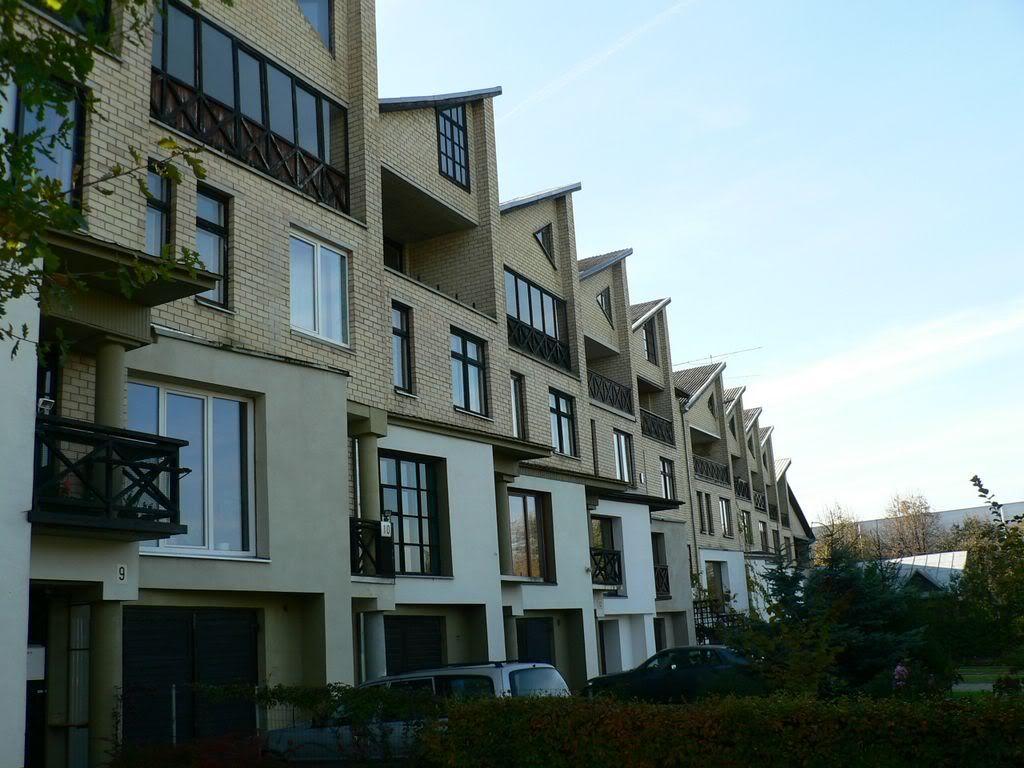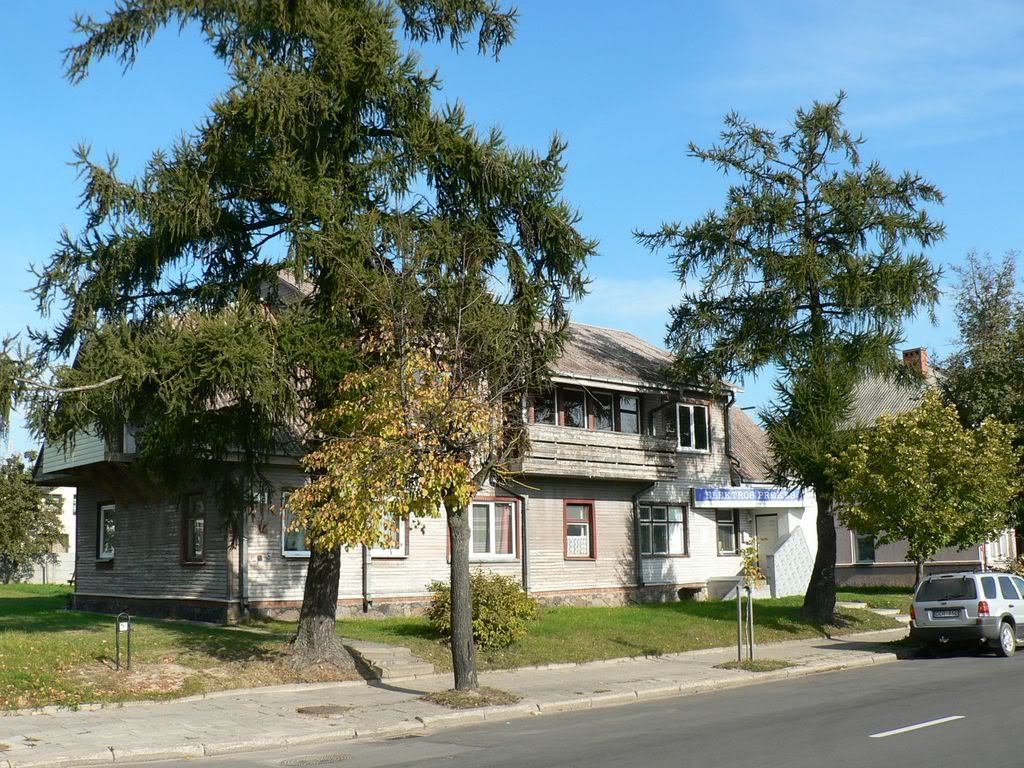Panevėžys - the capital of Aukštaitija, part 6
This time one more walk along not very famous and facade-like areas of Panevėžys:

This time we will make short walk along Ukmergės, Vilniaus and adjacent streets. The area which we will visit is marked in the azure in the next map. Don't big surprise by the large area marked on the map: bigger part is occupied by the park called Skaistakalnis (older people liked to use the Polish version of the same name - JasnoGorka - meaning the same). And park will be not present in this report:

On Ukmergės street is situated the biggest market in Panevėžys. As I know at the same place this market exists from the XIXth century so it could be viewed as an old market. From the street market is separated by various commercial buildings mainly from 1980s - it is rather interesting that market infrastructure was developed in Panevėžys in 1960s-1980s quite actively:

Or several remaining older cottage style houses:

Just in front of the market you can find former German church of Panevėžys, now simply Lutheran community church (during soviet period church has been used as farm goods shop:

Behind the church park begins and near the park in 1980s there were built a series of residential buildings for the local "elite" - then-time party leaders, managers of factories, etc.:


Returning back to the Ukmergės street - school situated in the 1930s building:

Probably the single remaining example of old pavement in whole town :)

But in principal this area looks like this:


At the end of Ukmergės street and near the Vilniaus street you can find quite bug complex of JSC "Naujoji Ringuva" factory (formery Panevėžys soap factory). Established in 1922 it's complex was built mainly in 1930s with some additions in the late 1940s and early 1950s and is well preserved. So it could be treated as some sort of industrial architecture of 1930s monument. Here are several photos from the street since factory is still working and it is impossible to walk inside freely. And my attempts to make photos from the fence weren't greeted by the guards:


I guess this sculpture appeared in the 1940s but it may be the placed here also in the 1930s. I don't s\know simply:

If we will go along Vilniaus street away from the center views will be as follows:


At the end of Vilniaus street and near the park are situated residential buildings of modern Panevėžys "elite":

This district is separated from industrial districts by the artificially built lake on Nevėžis river:

If we then turn south from the Vilniaus street we will go into the typical commiblock areas from 1970s-1980s. Houses - both residential and public - here are typical. Only Panevėžys is the leader in the renovation of the commieblock houses in whole country and this could be seen even in this district. Renovated school:

And typical 5 story houses:



This time we will make short walk along Ukmergės, Vilniaus and adjacent streets. The area which we will visit is marked in the azure in the next map. Don't big surprise by the large area marked on the map: bigger part is occupied by the park called Skaistakalnis (older people liked to use the Polish version of the same name - JasnoGorka - meaning the same). And park will be not present in this report:

On Ukmergės street is situated the biggest market in Panevėžys. As I know at the same place this market exists from the XIXth century so it could be viewed as an old market. From the street market is separated by various commercial buildings mainly from 1980s - it is rather interesting that market infrastructure was developed in Panevėžys in 1960s-1980s quite actively:

Or several remaining older cottage style houses:

Just in front of the market you can find former German church of Panevėžys, now simply Lutheran community church (during soviet period church has been used as farm goods shop:

Behind the church park begins and near the park in 1980s there were built a series of residential buildings for the local "elite" - then-time party leaders, managers of factories, etc.:


Returning back to the Ukmergės street - school situated in the 1930s building:

Probably the single remaining example of old pavement in whole town :)

But in principal this area looks like this:


At the end of Ukmergės street and near the Vilniaus street you can find quite bug complex of JSC "Naujoji Ringuva" factory (formery Panevėžys soap factory). Established in 1922 it's complex was built mainly in 1930s with some additions in the late 1940s and early 1950s and is well preserved. So it could be treated as some sort of industrial architecture of 1930s monument. Here are several photos from the street since factory is still working and it is impossible to walk inside freely. And my attempts to make photos from the fence weren't greeted by the guards:


I guess this sculpture appeared in the 1940s but it may be the placed here also in the 1930s. I don't s\know simply:

If we will go along Vilniaus street away from the center views will be as follows:


At the end of Vilniaus street and near the park are situated residential buildings of modern Panevėžys "elite":

This district is separated from industrial districts by the artificially built lake on Nevėžis river:

If we then turn south from the Vilniaus street we will go into the typical commiblock areas from 1970s-1980s. Houses - both residential and public - here are typical. Only Panevėžys is the leader in the renovation of the commieblock houses in whole country and this could be seen even in this district. Renovated school:

And typical 5 story houses:
